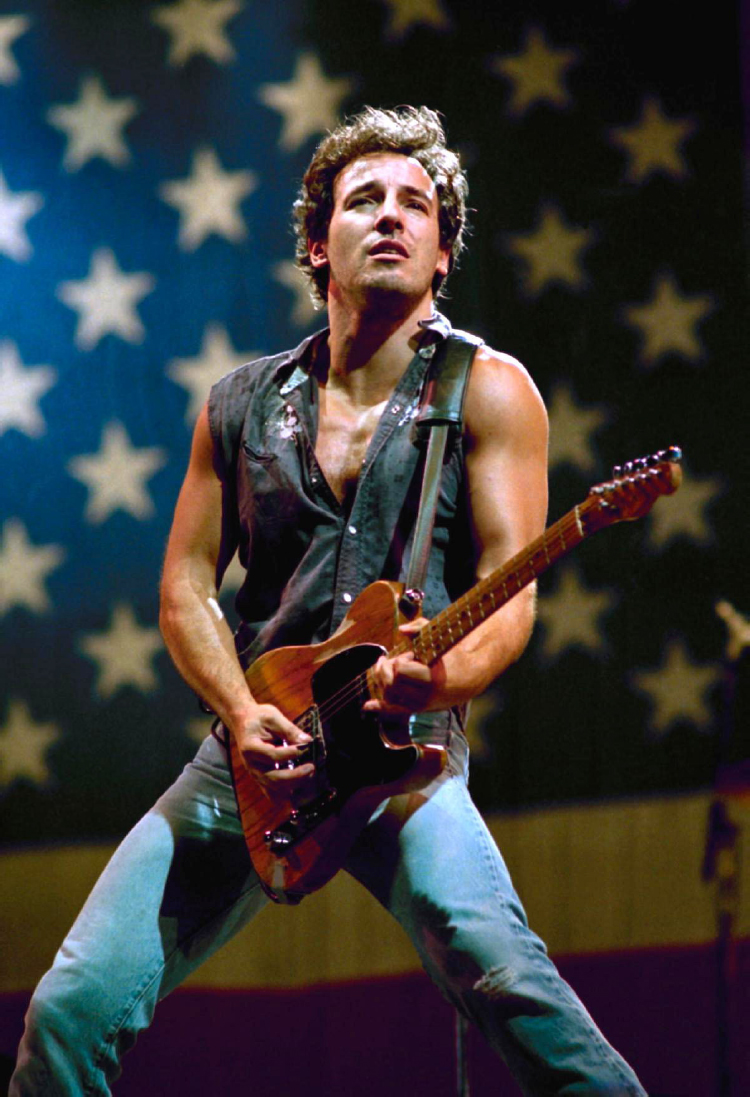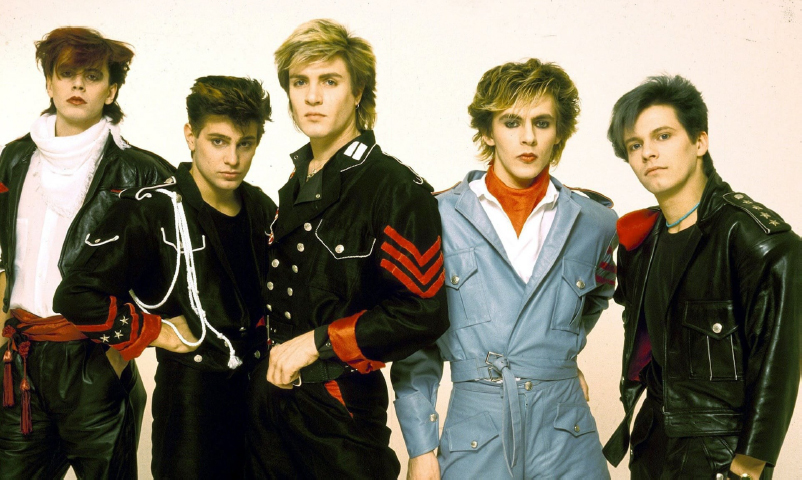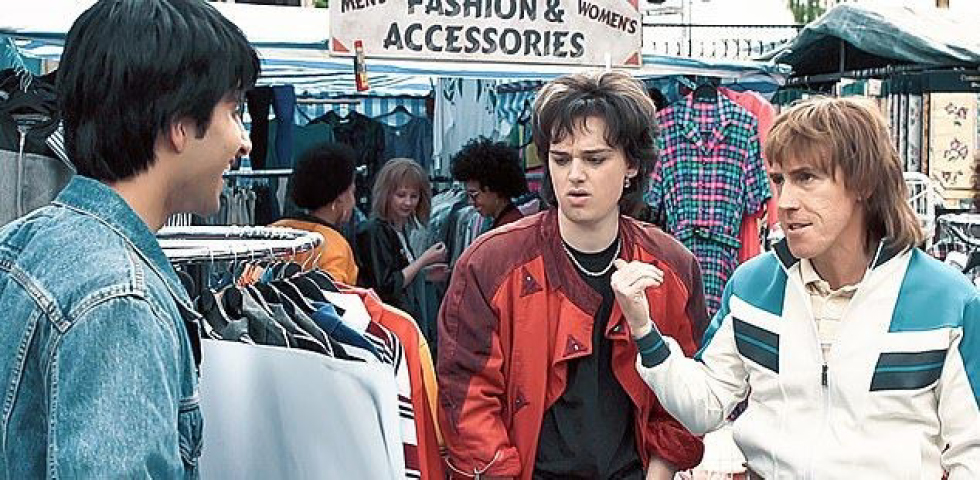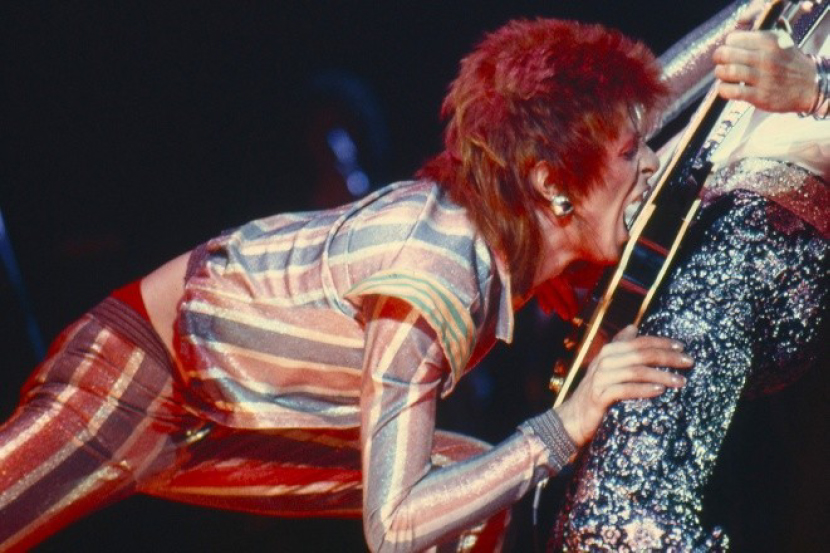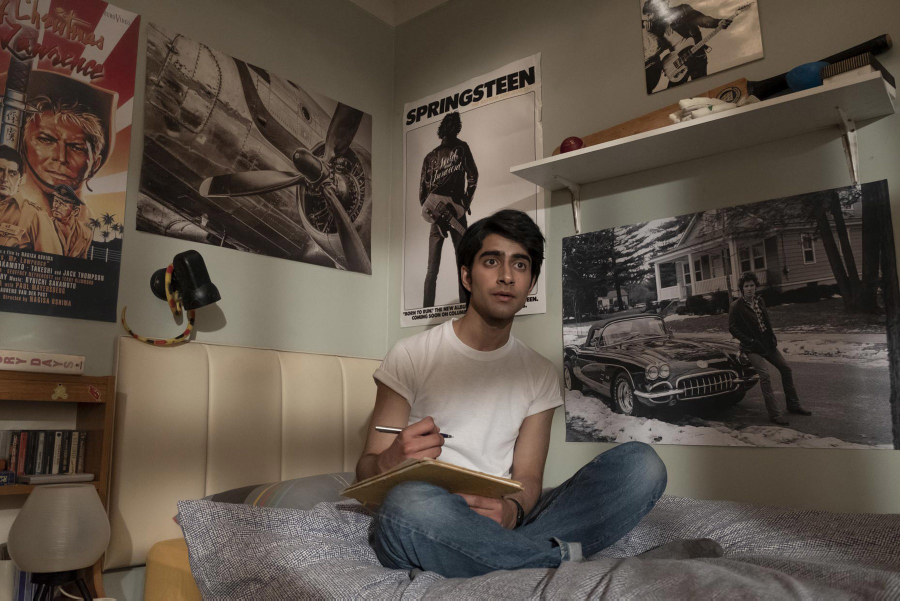Bohemian Rhapsody (2018, Bryan Singer) and Rocketman (2019, Dexter Fletcher) were two commercially and critically successful bio-films about popular music superstars: respectively, bisexual British lead singer/keyboardist of Queen Freddie Mercury and the gay British singer/pianist Elton John. Given the long history of cultural-national rivalry between America and Britain over global popular music supremacy – and, more specifically, rock music supremacy – the counter-discourse (read: rebuttal) was Blinded by the Light (2019, Gurinder Chandra; henceforth BBTL). My focus is not so much the central narrative of BBTL and how the character of Javed Kahn’s discovery of Bruce Springsteen’s songs is a life-changing personal experience as a teen in late-1980s Britain. Rather, it is how BBTL’s subtext represents the British popular music scene at the time and, in turn, perpetuates the mythic “rock tradition” embodied by Springsteen: the “great white hope” of rock and roll as the straight, working-class, American male. After seeing Springsteen in concert at the Harvard Square Theater, Jon Landau’s review in The Free Paper (May 22, 1974) famously proclaimed
I saw rock ‘n’ roll past flash before my eyes. And I saw something else: I have seen the future of rock and roll and its name is Bruce Springsteen…Springsteen does it all. He is a rock ‘n’ roll punk, a Latin street poet, a ballet dancer, an actor, a joker, a bar band leader, hot-shit rhythm guitar player, extraordinary singer, and a truly great rock ‘n’ roll composer…I racked my brains but simply can’t think of a white artist who does so many things so superbly…. Bruce Springsteen is a wonder to look at…a cross between Chuck Berry, early Bob Dylan, and Marlon Brando. Every gesture, every syllable adds something to his ultimate goal – to liberate our spirit while he liberates his through barring his soul.1
In the 1980s, MTV and music-videos marginalized radio and singles as a means of popular music consumption; synthesizers and drum machines usurped electric guitars and drum kits as a primary means of popular music production. In the UK this became known as “New Pop” and freely appropriated genres like disco, Europop, glam, art rock, MOR, and Motown into postmodern pastiches. As Simon Reynolds recounted
Journalists such as [Paul] Morley celebrated the “transient thrill” of disposable pop…Hedonistic paeans to consumption and polished product. And they challenged the implicitly masculine critical hierarchies that despised the synthetic and mass-produced. This gender-coded shift from “rock” to “pop” sensibility was in many ways a flashback to glam…New Pop involved a renaissance of glam’s interest in artifice, androgyny, and all the delicious games you could play with pop idolatry.2
In 1984, Springsteen “updated” his sound with Born in the USA, a record that consciously foregrounded keyboards, synthesizers, and studio-production effects (e.g., the in-vogue “gated reverb” snare drum sound). Yet Debby Miller’s rave review of Born in the USA in Rolling Stone (July 19, 1984) denied any possible affinity, concessions, and/or contamination by the Second British Invasion of New Pop bands –and even the First British Invasion spearheaded by the Beatles, the Rolling Stones, and the Yardbirds – by stressing the inherent Americanism of Springsteen and rock.
He’s set songs as well drawn on his bleak acoustic album Nebraska to music that incorporates electronic textures [read: synthesizers] while keeping as its heart American rock & roll from the early 1960s. Like the guys in the songs, the music was born in the U.S.A.; Springsteen ignored the British Invasion and embraced the legacy of Phil Spector’s releases, the sort of sort of soul that was coming from Atlantic Records and especially the garage bands that had anomalous radio hits.3
In one scene after his conversion to Springsteen/rock tradition –up to modeling his physical appearance on Springsteen’ image – Javed is at a boutique with friend Matt who is clad in New Pop attire. Javed displays a large poster of Springsteen and enthuses “This guy is incredible!” Matt asks with a sour expression: “Who is that: Billy Joel?” The sign at the top of the frame above Matt’s head in the background reads
MEN’S FASHION & WOMEN’S ACCESSORIES
The word “MEN’S” cut off by the top of the frame and “WOMEN’S” appears almost directly above Matt. Here Matt’s status in the film is defined. In his adherence to New Pop glam-androgyny, Matt is in a liminal zone of gender where his trapped between man (male) and woman (female) separated by “fashion & accessories” and the regime of New Pop (effeminate mass culture).4 Mathew Bannister suggested
Subcultural studies represented rock masculinities as working-class, physical, expressive, aggressive…UK pop journalists distanced themselves from thecontradictions of rock masculinity’s supposed proletarianism was by placing it inUS rock, hence Jon Savage’s dismissal of Bruce Springsteen as “a reassertion of‘traditional’ masculine values”…Masculinity corresponded to old-fashioned,essentialist ideas of rockism.5
Extrapolating on this claim, Bannister compared critical positions of Dave Marsh – an unapologetic champion of Bruce Springsteen –Joe Carducci, author of one of the most stridently reactionary studies of rock music Rock and the Pop Narcotic (1991). While Marsh’s politics are left-progressive and Carducci’s right-libertarian, they agreed that
UK music is “faggy” or effete, such as Marsh’s distain for “art rock”…Marsh seesrock as a uniquely American form of expression, oozing a vitality that Britishgroups can never really emulate…Underlying this is an organic argument aboutplace, identity, and tradition – the English lack the popular tradition. The subtextis that if you are white and non-American, you can’t really “get” rock and roll…These presuppositions also continue into indie…Joe Carducci champions ahomosocial “working-class” masculinity as central to rock, while heaping scornon pop, women musicians, and gender-bending UK stars like David Bowie.6
In a 1999 interview, Carducci reiterated the views expressed in Rock and the Pop Narcotic and merit quoting at length as far as outlining his position:
There’s been so much damage to the tradition because it’s not like it is inAmerica…That’s where I thought [David] Bowie was such a catastrophe. That’s why the word “fag” has meaning, because it wasn’t the people who were faggywere necessarily homosexual. The people in these bands who were faggy werechipping away at the tradition. The tradition can take a lot of abuse and ridiculebut at a certain point, in a culture where it’s a transplant like Britain, you can killit….After David Bowie and Emerson, Lake, and Palmer, there were several weirdEuropeanizations of rock music and you end up with a pop scene that doesn’thave any rock music anymore.7
In the context of this critical discourse, David Bowie makes a brief but crucial cameo appearance in BBTL. Javed’s bedroom becomes a shrine to Springsteen with three posters and photos of Springsteen (clockwise from the bottom): Springsteen sitting on the hood of a muscle car; Springsteen shown from behind with his trademark Fender Telecaster slung to call attention to as much as conceal his buttocks with the neck dangling downward (a flaccid penis); the album cover of Born to Run with the Telecaster at groin level and Springsteen holding the neck upwards (an erect penis).8
As important, in the upper left of the shot is part of a movie poster for the World War II drama Merry Christmas, Mr. Lawrence with the face of the star David Bowie visible. The image of David Bowie constructs internal ideological struggle within the shot between the “messianic” symbol of rock tradition (Springsteen) versus and the “catastrophic” symbol of anti-rock tradition (David Bowie). Kalefa Sanneh argued, “A rockist isn’t just someone who goes on and on about Bruce Springsteen…a rockist is someone who reduces rock ‘n’ roll to a caricature, the uses that caricature as a weapon. Rockism means idolizing the authentic rock legend.”9 BBTL is not simply a rockist film because it “goes on and on about Bruce Springsteen.” It weaponizes the rock tradition through the image-ideal of Springsteen against the caricatures of New Pop. Ultimately, BBLT reframes the cultural-historical narrative so America is not conquered by the British Second Invasion, but the British Second Invasion is conquered by Bruce Springsteen.
Author Biography:
Doyle Greene is an independent scholar and author of several books and articles on cinema, television, and popular music. His primary area of interest is ideology critique of American popular culture. He currently serves as a co-editor for Film Criticism.
Notes
- Achieved at https://www.greasylake.org/the-circuit/index.php?/topic/135979-landaus-74-harvard-square-review/; accessed February 2, 2021 ⮭
- Simon Reynolds, Rip It Up and Start Again: Postpunk 1978-1984 (New York: Penguin, 2006), 236-7. ⮭
- Archived at https://www.rollingstone.com/music/music-album-reviews/born-in-the-u-s-a-97901/; accessed on February 2, 2021. ⮭
- In this respect, the critically constructed difference between rock (masculine) and pop (feminine) in BBLT is consistent with Andreas Huyssen and his argument that high culture (masculine) versus mass culture (feminine) is historically gendered; see “Mass Culture as Woman: Modernism’s Other” in After the Great Divide: Modernism, Mass Culture, and Postmodernism. Bloomington: Indiana University Press, 1986. ⮭
- Dr. Mathew Bannister, White Boys, White Noise: Masculinities and 1980s Indie Rock (Burlington, VT: Ashgate 2006), 6-7. ⮭
- White Boys, White Noise, 7. ⮭
- Joe Carducci, interview with Randy Gelling. Achieved at: http://www.furious.com/perfect/carducci.html ; accessed on August 8, 2015. ⮭
- See Steve Waksman, Instruments of Desire: The Electric Guitar and the Shaping of Musical Experience (Cambridge: Harvard University Press, 2004), especially 188 on the electric guitar as “technophallus.” ⮭
- Kalefa Sanneh, “The Rap against Rockism” (New York Times, October 31, 2004). Archieved at: https://www.nytimes.com/2004/10/31/arts/music/the-rap-against-rockism.html; accessed on February 14, 2021. ⮭

